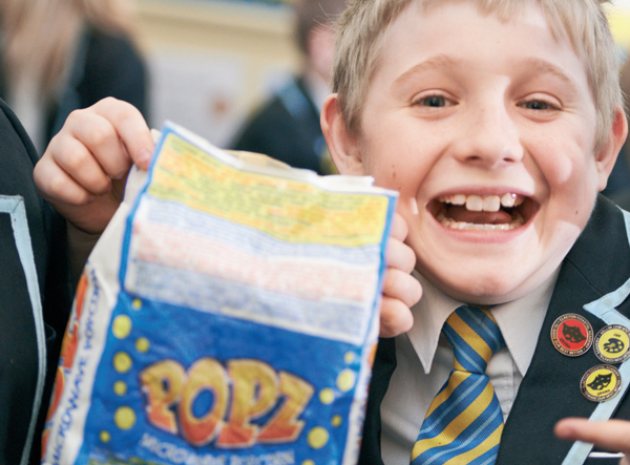Screen Time
Film can be a fantastic medium for developing teaching and learning across the curriculum, as Steven Keevil explains…
As a further education and former secondary school teacher who’s interested in film, and as leader of my sixth form college’s film club, I’ve seen repeatedly how the medium broadens young people’s horizons and enriches their learning experiences. Whether it’s Alfie (15) to spark a discussion about the treatment of women, Life is Beautiful (PG) to introduce the holocaust to a young audience, or Baz Luhrmann’s adaptation of Romeo and Juliet (12) to enthuse a disengaged Year 10 SEN group, film can be a powerful tool for teachers seeking new ways to educate and inspire. It’s a medium that appeals to all, regardless of ability, yet unlike art forms such as literature, theatre or music, it has never, to date, featured prominently in education – so it’s great that the British Film Institute has decided to invest £26 million of lottery funds over the next four years to build on the work of education charities FILMCLUB and First Light and make film education available to every school in the country. Key elements of the programme for teachers will be a new, National Youth Film Festival with screenings and workshops they can take pupils to for free, increased access to training and CPD about film-making and using film in the classroom, and a raft of resources that will complement the curriculum in subjects including English, literacy, history, geography, science, PSHE and modern languages.
Have you already used film in your lessons and would like to do so more? Are you keen on the idea but unsure how to go about it? Here are a few suggestions to get you started:
English language
Reviewing films watched in class or their school film club for the FILMCLUB website is a good way to develop students’ writing skills, increase confidence in their ability and engage reluctant writers; boys, in particular, often engage more effectively with visual learning and seem more receptive to writing about what they have seen than about what they have heard or read. Pupils are also motivated by knowing their work will be read by other members. The comprehensive review writing tips available to download from the charity’s website are a useful guide, and set word counts can be helpful. To increase the challenge ban certain over-used words; my students are not allowed to use: good, bad, rubbish, very, interesting or boring.
Rewriting or plotting an existing film can be an exciting and challenging activity, for example, after a screening of Harry Potter and the Prisoner of Azkhaban, the students were tasked with outlining the plot but were not allowed to mention magic or wizardry of any kind – the result was a dark, thrilling story of espionage, treason and mental health!
English literature
Reviewing films is also a great way to improve critical skills, challenging students on the difference between objective and subjective reasons for liking and disliking a film.
Film adaptations of books and plays are a powerful tool to support the study of English literature and inspire young people who find certain texts challenging. While sing them in class isn’t new, the possibilities are many and varied, and can be applied to a wide variety of popular texts ranging from To Kill A Mocking Bird, Of Mice and Men and Touching The Void, to Romeo and Juliet, Macbeth and King Lear. Modern adaptations such as 10 Things I Hate About You (based on Taming of the Shrew), Lion King (from Hamlet) or Easy A (based on Scarlett Letter) offer a new perspective on classic works. Teachers’ notes, discussion questions and recommended activities such as those found in FILMCLUB’s ‘Shakespeare on Film’ and ‘GCSE English Enhancement’ resources can be used to promote an array of post-screening discussions ranging from the suitability of actors to portray the novel’s characters, to comparisons between the book and film, to the interpretation of an author’s work by a director. Analysing the soundtrack, lighting and camera shots, for example, can help students understand and draw conclusions about the mood of a text. Or ask students to look at foreshadowing in a film and the book and consider why directors have altered the structure of the original text.
Modern languages
Film is a perfect way to learn a foreign language in context and be exposed to different cultures, real life conversation and new day-to-day phrases and vocabulary, increasing students’ ability to cope with various accents and helping them prepare for public exams. In La Haine (15), for example, a film about three friends from the ghettos of the Paris suburbs, much of the French we hear is banlieue French, spoken in the slums in the Paris outskirts. As well as introducing students to this dialect the film can also be used to spark a discussion about what we can learn about people from their accents.
Film can also be used to support the study of foreign literature – for example adaptations such as Cyrano de Bergerac (U) (based on a French play), The Motorcycle Diaries (15) (based on Che Guevara’s diary) or Sarah’s Key (12) (from a book about a young girl caught up in WWII). You could use the book as supplementary work for reading afterwards, or as background into the film.
Other foreign languages films which have appealed to my students include: Persepolis (12), the French animation from Iran of an autobiography about a precocious young Iranian girl that begins during the Islamic Revolution; Sophie Scholl (PG), a German film about the 21-year old student and anti-violence revolutionary activist in Nazi Germany, and Rashomon (12), the classic Japanese melding of short stories that innovatively explores suspicion and truth.
PHSE
Film can be a great resource to start a discussion about difficult topics such as bullying, sex, drugs, alcohol and Internet safety. Mean Girls (12), for example, is a well written examination of social groups and hierarchies within the school system, and a useful platform from which to consider these issues, along with the theme of retaliation and retribution. About A Boy (12) also deals with the issue of bullying and for older students the film Gran Torino (15) looks at challenging the assumptions people make about others.
The documentary Catfish (12) examines the idea of identity and representation online and, for older students, Trust (15) is a powerful drama about the hidden dangers of the internet. Michael Moore’s acclaimed documentary Bowling for Columbine (15) can promote discussion not only about gun law but also, more generally, the effects of violence in society. Other films which can be used to support topics covered in PHSE include: Juno (12) (teenage pregnancy); Kidulthood (15) (teenage life in modern London); Trust (15) (online sexual predators); and Maria Full of Grace (15), (drugs).
History
Films can bring to life different periods and events in history, engage pupils in subjects or introduce a complex topic such as the holocaust; it can also be used in discussions about analysing sources.
Within the context of the ‘Hollywoodisation’ of history, for example, it can be pertinent to screen a film like U-571 (12) and discuss the historical inaccuracies. Downfall (15), a controversial study of the final days of Hitler from his perspective, is a useful starting point for a debate about whether, and how, history’s monsters should be remembered. The Lives of Others (15) is a useful tool to support teaching about the cold war from an East German perspective and spark a discussion about the level of surveillance in our own society.
Geography
I have used film to support topics relating both to physical geography, (the environment, climate change and natural phenomena), and human geography (migration, immigration and globalisation). Documentaries like An Inconvenient Truth (U) and Encounters at The End of the World (U) will encourage students to think about their own use of resources and how mankind treats the planet. Waste Land (PG) is an excellent documentary for exploring environmental issues, waste and the power of human creativity – and the campaigning drama Promised Land (12), gives an insight into the dangers of fracking, the process used in digging for gas. Another good choice is Fast Food Nation (15), in which an all-star ensemble examines the risks caused by the globalisation of the fast food industry, to health, the environment and society. As well as complementing the curriculum, these films, and the questions they raise, can help students to develop their thinking and problem solving skills.
Maths
Maths is not a subject that has been ignored by film, so film shouldn’t be ignored in the teaching of maths. The following, in particular, may interest and inspire your students: Pi (15), a horror story with mathematics, as a paranoid mathematician searches for a number, found in nature, that will unlock the universe; A Beautiful Mind (12), a biographical film about John Nash, a Nobel Laureate in economics – as well as economic theory the film also involves scenes about cryptography; Good Will Hunting (15), about a janitor at MIT who has a gift for mathematics, but needs counselling to find direction in his life.










